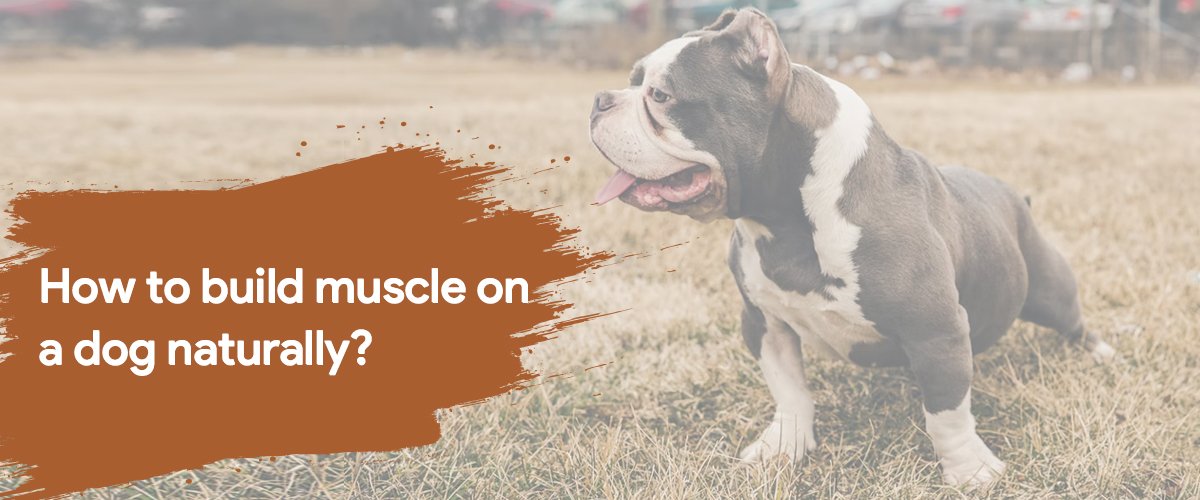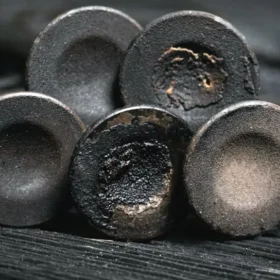When attempting to build your dog’s muscle, it is critical to keep the breed in mind. Don’t try to exceed the natural breed by trying to turn your furry friend into an anatomical freak. Muscle
The desire for muscular mass isn’t restricted to humans; many individuals want to help their dogs bulk up as well. Certain dog breeds are genetically prone to having a lot of muscular mass, to name a few, Pit Bulls, Rottweilers, and Doberman Pinschers, are the finest breeds for bulking up and building dog muscles. Whatever the cause or breed, if you want your dog to bulk up, you must do so in a natural, healthy manner.
Start with Consulting a Vet
You can practice and follow many approaches for diet, nutrition, exercise, and training. But, in the end, the key to muscle gain in a dog is proper food and activity. It will take time, especially if you want to go about it naturally.
So, where do you begin? Whatever your motive for bulking up your dog, you should be aware that the procedure will require a major shift in their lifestyle and habits. So, consulting a veterinarian before you begin your dog’s muscular journey is a good and viable approach.
Your veterinarian is trained and skilled in assisting you in developing the ideal nutrition plan for your dog based on their traits and demands. Each breed demands a distinct diet, and your doctor can assist you in developing a coherent and planned food plan and exercise routine based on your dog’s age and nutritional needs. Furthermore, your veterinarian can assess any hazards associated with the process of bulking up your dog.
Choosing the Right Diet
There are dog food products on the market that are particularly intended to fulfill the calorie and nutritional requirements of a high-performing dog. High-performance dry dog food is recommended for athletic dogs, performance dogs, and herding dogs.
Give your dog a high-quality, protein-rich meal. When choosing a dog food, ensure that the animal proteins are not completely labeled as “byproducts.” Examine the label of your meal and make sure the top three protein components are complete proteins. They should, for example, be branded simply as poultry, beef, or another popular protein source.
Find good dog Muscle Supplements
There are several good reasons to add dog growth supplements to your pet’s diet. You may integrate a muscle-building supplement into your dog’s everyday diet to boost his muscle condition. Supplements can help your dog’s joints, muscles, tendons, and ligaments stay healthy. They can also help your dog’s skin and hair, as well as his digestive health.
Supplements for your dog’s nutrients, vitamins, and minerals are necessary, especially if they’re exercising to gain weight. While you can provide a portion of healthy food for them, there are times when you will need to supplement essential minerals and vitamins that would otherwise not be available naturally.
However, nutritional supplements are not the same as supplements given to dogs to improve or raise their energy and performance to help them gain muscle faster.
Have an exercise routine
Aside from regular walks or runs, your dog requires a consistent exercise regimen. To increase muscle and make it stronger, you must include a variety of workouts. Exercise not only keeps your dog intellectually and physically active and healthy, but it also helps you bond with your canine partner. Some of the popular exercises for muscle building in dogs are:
Swimming:
Swimming is not only good for your dog’s joints, but it is also great for muscular development. A 10-minute swim equals one hour of walking.
Furthermore, it gives resistance to the entire body, particularly the front end, which does not get as much effort from walking alone. Because the water supports your dog’s body, it relieves pressure on their joints and bones and is low-impact, making it excellent for older dogs and dogs with injuries.
Walking:
Walking your dog on sand or in knee-high water gives it more resistance than conventional walking does not, and it is also a low-impact workout. Just like swimming, 10 minutes of exercise is more than enough to give your dog a decent workout. Running uphill adds resistance and is excellent for developing hind leg strength.
Weight pulling:
Weight pulling is a dog sport, but you can include it in your dog’s muscle training and strength regimen. The most critical factor is to employ an appropriate weight-pulling harness. These are intended to distribute weight equally over your dog’s body.
Bottom line
When attempting to build muscle in your dog, it is critical to keep the breed in mind. Don’t try to exceed the natural breed by trying to turn your furry friend into an anatomical freak. Muscle building in dogs is a slow, natural process that requires a lot of patience and determination. Although good nutritious food and regular exercise will fulfill your dog’s muscular needs, there is no harm in adding dog growth supplements to its diet.







